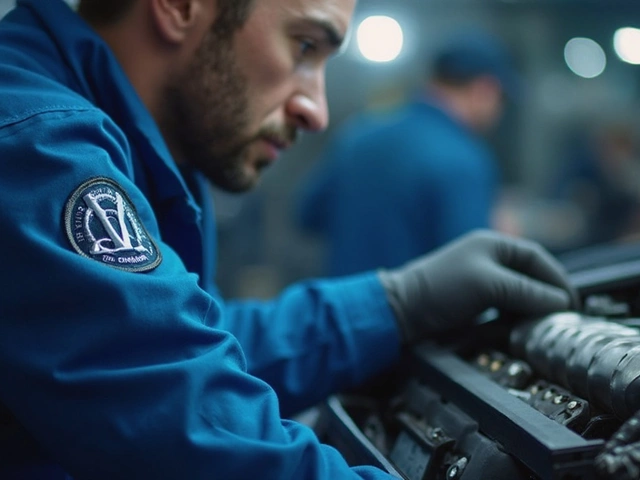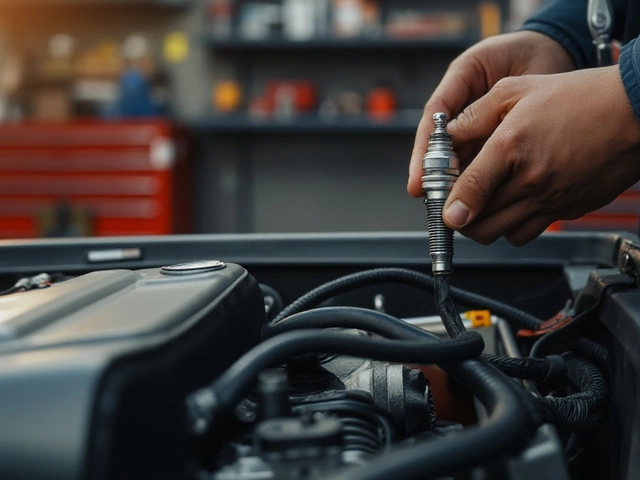Automotive Systems – Simple Tips for Everyday Drivers
When your car feels off, it’s usually one of the many systems underneath the hood. Knowing the basics can save you time, money, and a lot of stress. Below you’ll find quick, practical advice on the most common parts: air filters, brakes, clutches, suspension, spark plugs, and fuel pumps.
Brakes, Clutches and What to Check First
Brake pads wear out faster on the rear side of many cars because of the way weight shifts when you stop. If you hear a squeal or feel a shudder, replace the rear pads before the front ones. Changing only the rear pads is fine as long as they’re the same size and material as the front set – just keep an eye on pad thickness.
A slipping clutch often smells like burnt leather. If you notice that smell, stop pushing the gear lever hard and let the clutch cool. Most clutches last between 60,000 and 100,000 miles, but the exact number depends on driving style. When the clutch starts to slip, you’ll feel a loss of power during acceleration.
Suspension, Wheels and Engine Heartbeat
Driving with a bent or damaged suspension isn’t just uncomfortable – it’s unsafe. Look for uneven tire wear, clunking noises over bumps, or a car that leans to one side. If any of these show up, have a professional check the control arms, bushings, and shock absorbers.
Alloy wheels don’t rust like steel, but they can corrode if the clear coat is damaged. Regularly wash the wheels, dry them, and apply a light sealant to keep the finish alive.
Spark plugs are tiny but mighty. Bad plugs cause rough idling, misfires, and poor fuel economy. You’ll know they need replacing if the engine hesitates on acceleration or the check‑engine light comes on. A set of fresh plugs can boost power and save fuel.
The fuel pump is the silent workhorse that feeds the engine. A whining noise from the rear of the car or hard starts can mean the pump is failing. Testing it involves checking fuel pressure with a gauge – a quick job for a garage or a confident DIYer.
Air filters keep dust out of the engine and cabin. Premium filters claim better flow, but a well‑fitting standard filter does the job for most drivers. If you push a lot of air through the intake (like with a performance upgrade), consider a higher‑flow filter.
All these systems work together, so a problem in one area can affect another. For example, a weak clutch can make the car feel like the brakes aren’t responding, and a bad fuel pump can cause a misfire that feels like a spark plug issue.
Keeping a simple maintenance schedule helps you spot trouble early. Change the oil, check the brakes, inspect the suspension, and replace spark plugs according to the manufacturer’s mileage. If you ever doubt a repair, our team at Northwich Tyres Centre can give you honest advice and fast service.
Remember, you don’t need to be a mechanic to stay on top of your car’s health. A quick visual check, listening for odd noises, and knowing when to book a professional can keep you safe and your vehicle running smoothly.
 4 February 2025
4 February 2025
Exploring Diverse Exhaust Systems: A Deep Dive into Their Types and Functions
Exhaust systems are crucial components of any vehicle, responsible for channeling away gases and impurities. This article explores the various types of exhaust systems, such as single, dual, high-performance, and more, illuminating their unique attributes and purposes. By understanding these systems, car enthusiasts and everyday drivers alike can make informed decisions about maintaining and enhancing their vehicles. With interesting facts and practical tips, readers will gain a comprehensive view of how exhaust systems influence vehicle performance and efficiency.






0